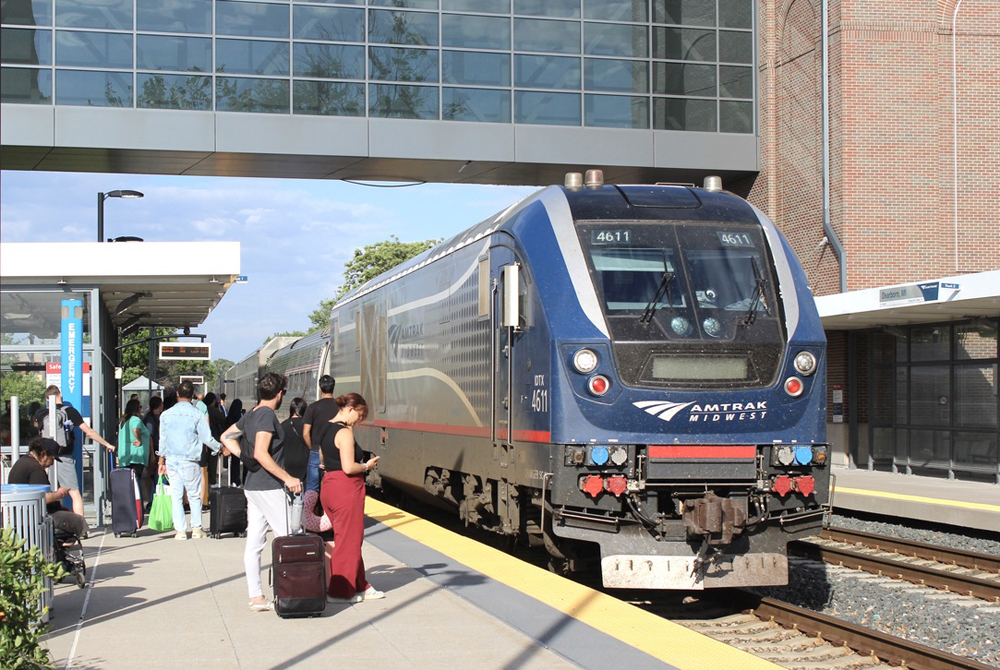
WASHINGTON — Responding to criticisms from members of Congress in a House hearing last week, Amtrak has posted a 14-page PowerPoint presentation aiming to justify a controversial incentive system that pays millions of dollars in bonuses to company executives.
Board Chairman Anthony Coscia said the compensation of senior executives would be posted on the Amtrak website during the hearing by the Transportation and Infrastructure Committee’s Subcommittee on Railroads, Pipeline, and Hazardous Materials [see “Lawmakers spar over Amtrak’s profitability and transparency …,” Trains News Wire, June 12, 2024]. The information appears at the end of “Pay for Performance Rewards,” which can be found by clicking successively on “About Amtrak,” then “Reports and Documents,” then “Performance incentive program.”
Top executives: $9,195,835 in salary and bonuses
Near the end of the report, separate slides list the fiscal 2023 long-term incentive awards and base salary for the “Executive Leadership Team” of 15 high-ranking officials: CEO Stephen Gardner, President Roger Harris, nine executive vice presidents, and four vice presidents.
The long-term incentive bonuses ranged from $305,808 to $154,962, and total $2,976,784, a $228,983 average for the 13 of 15 officers that received them. Base salaries were $490,000 to $305,000, totaling $6,219,051 (a $414,603 average).
Not addressed was the smaller “short-term incentive” program for which managers at many levels are eligible, other than an explanation that these rewards “are based on performance metrics tied to the company’s overall performance goals. If the company does not meet or exceed these rigorous goals, our employees are not rewarded with majority of awards since program inception awarding at below target levels.”
According to the description, “Improving performance” incentives also are generated by “delivering more trains to more places with improved customer satisfaction” with “increasing financial and operating efficiency (lowering operating losses and doing so with fewer delays).”
Bonus components
Formulas used to determine the long-term incentives have three categories, with separate thresholds that must be met for executives to receive at least 75% of the award:
— Customer satisfaction index (CSI) weighted at 30%; the index must achieve a minimum of 80%.
— Amtrak-caused delays weighted at 20%; it must be under 463 minutes per 10,000 miles.
— Adjusted operating income weighted at 50%; the loss must be reduced to $885 million.
If the minimum goals are not met, there is no award for the category. But if they are exceeded, the award could be 100% (“target”), or 130% (“superior”). The CSI index, generated from post-trip online customer surveys, came in at 79.6%, so no bonus was awarded for that component. The delay figure was 431 minutes, so a 23.1% bonus was awarded. But the operating income bonus was adjusted upwards to 130%, because the loss came in at $772 million — $1 million under the 130% “superior” threshold. That “bottom line” number is the product of cost allocation formulas, which have been under the microscope for two years by a special committee of the States for Passenger Rail Coalition.
Several pages of the presentation are devoted to comparing Amtrak’s bonus program to the “peer group” of “similarly-sized companies and industries that reflect the marketplace for talent in which we compete.” That assumes the skill set needed to effectively operate a passenger railroad is not unique.
Unmeasured management actions
A reasonable question, however, is what “performance” is being quantified to earn the compensation? Are there other possible measures for which managers could be held accountable?
The current system offers no provision for negatively adjusting management compensation for customers turned away and mobility denied as a result of poor asset management.
Capacity became constricted when current executive leadership furloughed personnel and sidelined revenue-producing Superliners and single-level sleeping cars in October 2020 — despite strong patronage in the long-distance segment even before vaccines were developed or bailout funding announced. Since then, management has settled on a minimally promoted lower-capacity/higher-fare business model that continues today.
Stored Horizon coaches and cafes used in state-supported service received required brake rebuilds, refurbishment, and inspections ahead of the work needed to return the stored equipment to service, because management was obligated to do so. Operating authorities are billed an allocated maintenance charge for the work, so there is a built-in revenue component that offsets the negative impact on executive bonuses.
Though interior freshening and scheduled overhauls have continued, returning long-distance Superliners and Viewliner sleeping cars to active service in response to demonstrated demand has not been prioritized in the same way. Not surprisingly, the “25%-off summer fare” sale promotion ending today (June 20) was limited to where excess capacity exists: Northeast Regionals and Acela.
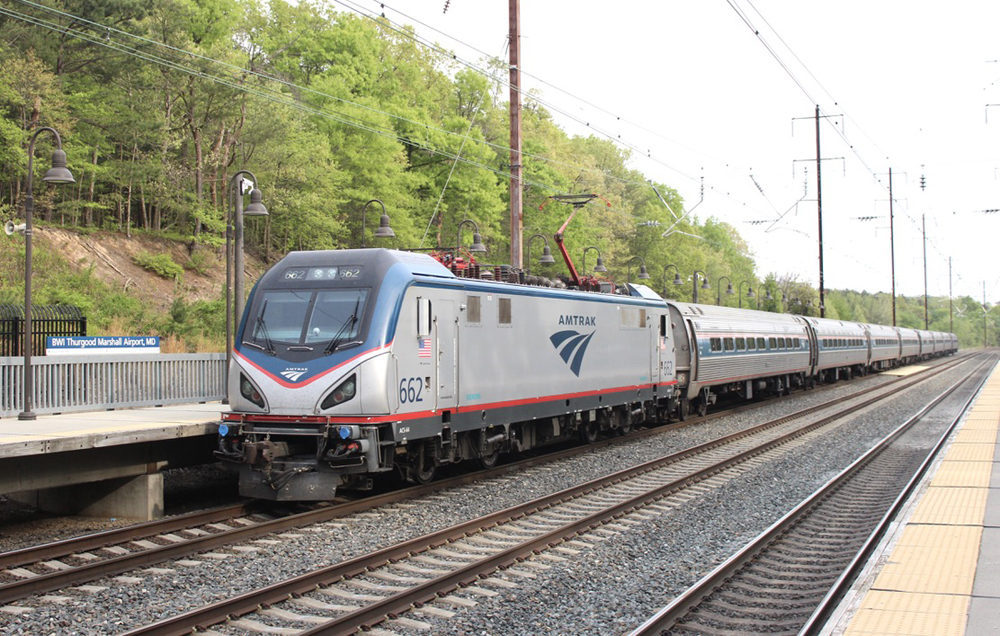
Stepped-up reinvestment in existing assets, and the human capital to make it happen, would add expenses certainly adversely affecting current-year bonuses, even though the revenue benefits of increasing capacity could pay dividends in subsequent years.
Similarly, the bonus system offers no incentive for dealing with customer-facing deficiencies, such as inadequate crew supervision, lack of marketing expenditures to strengthen national network routes, subpar food offerings, and expediting repairs to inoperative car washers that cause trains to operate for days with dirty windows. These long-running shortcomings would presumably be reflected in low customer satisfaction scores, but exactly how those are weighted remains shrouded in secrecy. Besides, bonuses totaling nearly $3 million for the top 15 executives were achieved without hitting the CSI target.
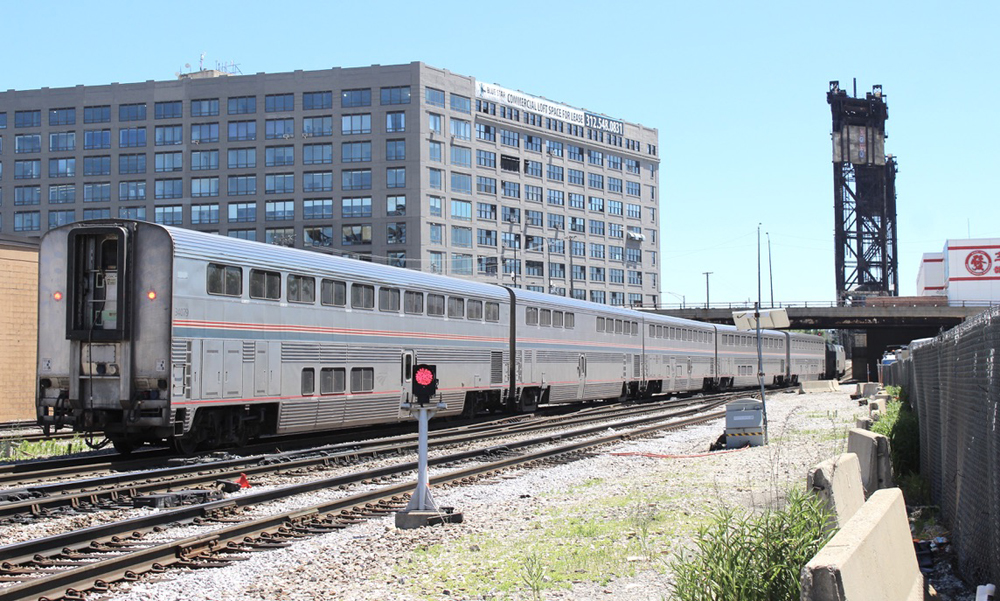
What bonuses replaced
As Coscia has often remarked at Congressional hearings, the current bonus system’s “savings” are derived from the projected cost of pensions jettisoned in 2015 that it replaced. The argument is also advanced in the “Pay for Performance Rewards” presentation.
The fact is that Amtrak pensions, coupled with generous railroad retirement benefits, succeeded in retaining employees with valuable institutional marketing, pricing, hospitality, and operational knowledge that wasn’t necessarily transferable from other industries. Those functions were either dropped or had to be staffed with newcomers. Amtrak’s board of directors and a revolving door of imported chief executives including Richard Anderson, Wick Moorman, and William Flynn — all walking away with bonuses — championed cost-cutting buyout programs that decimated in-house expertise.
The presentation claims, “Closing pension and retiree healthcare saved nearly $790 million in debt and closer to $2.2 billion in future benefit payment as of 2023, almost seven times higher than the cost of incentive awards since program inception, if the [pension and healthcare] program were ongoing.” But a three-pronged bonus system which places 50% of its value on bottom-line efficiency, without factoring in unmeasured negative impacts, doesn’t necessarily make for optimal management decision-making on behalf of the traveling public.
Finally, observers must wonder what else could be achieved by siphoning some of the executive bonus and salary compensation to customer-facing personnel responsible for effectively delivering Amtrak’s potentially unique transportation product. An organization chart showing every manager’s function does not appear on the website. So perhaps someone could be hired to at least wash windows.






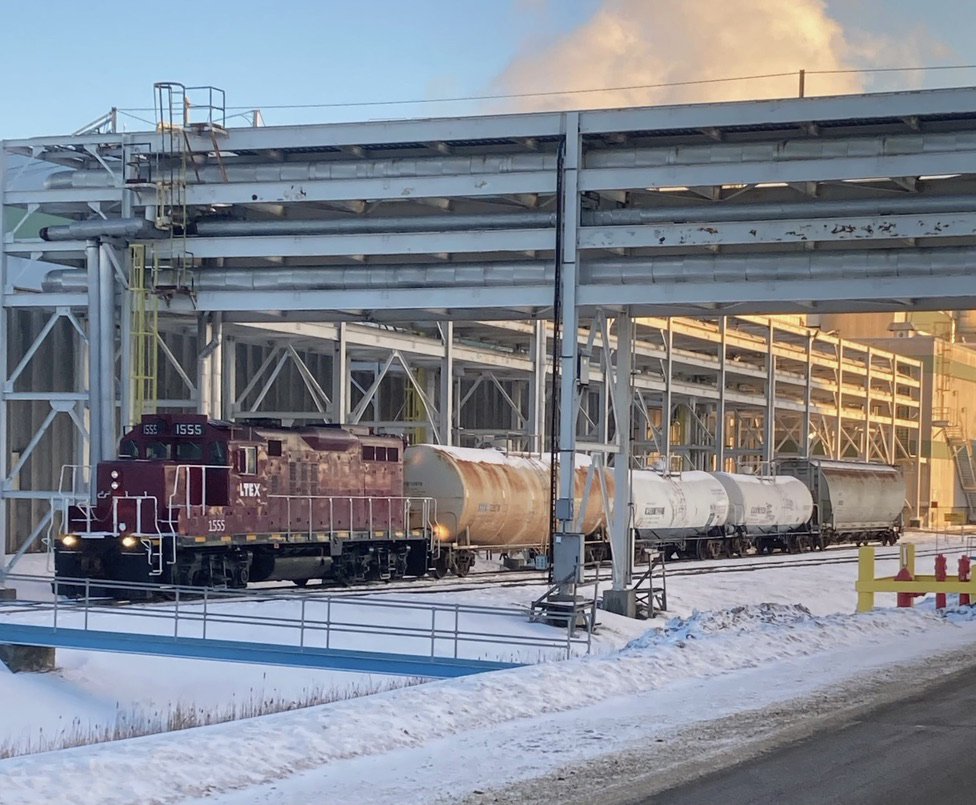

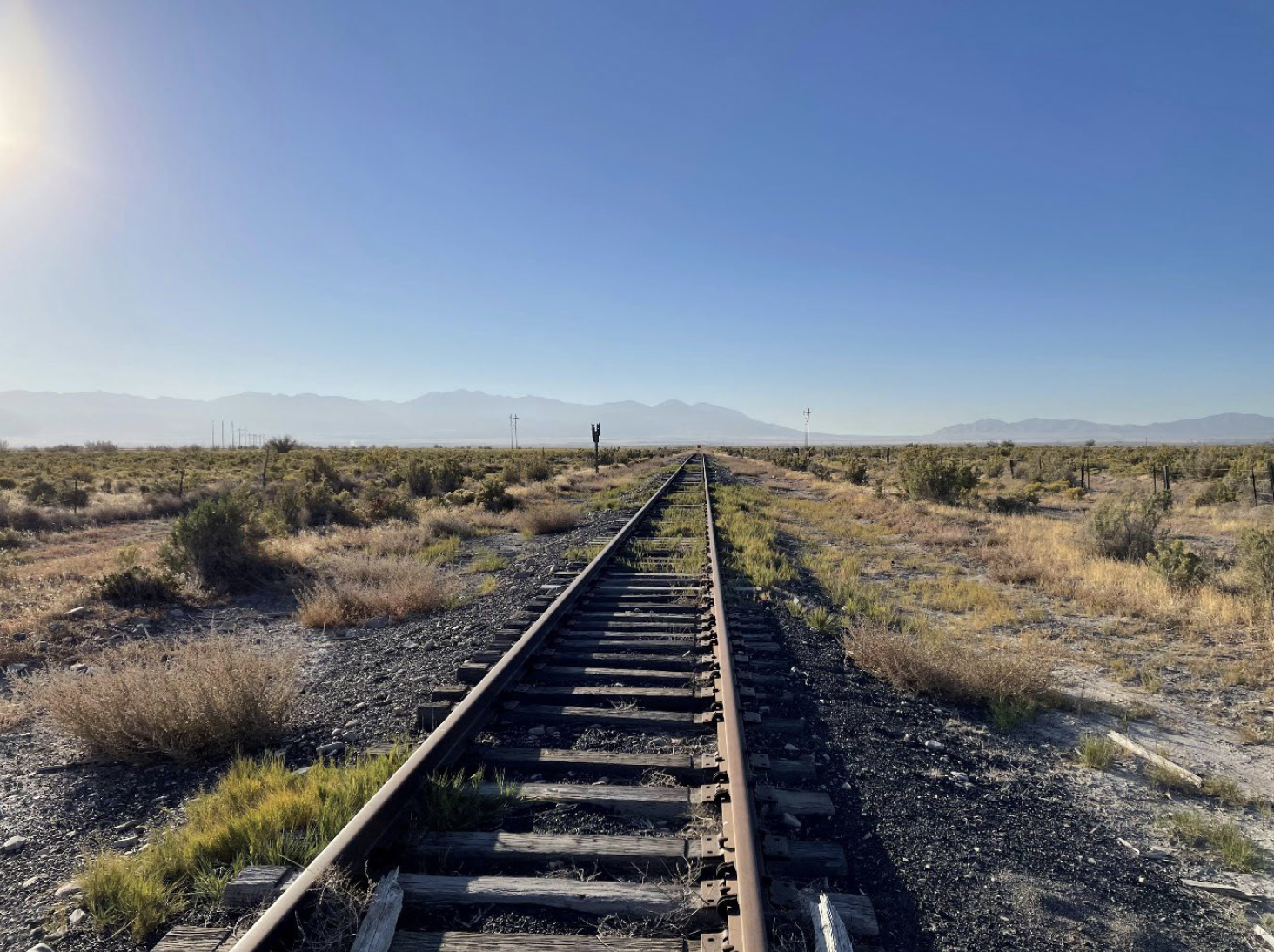
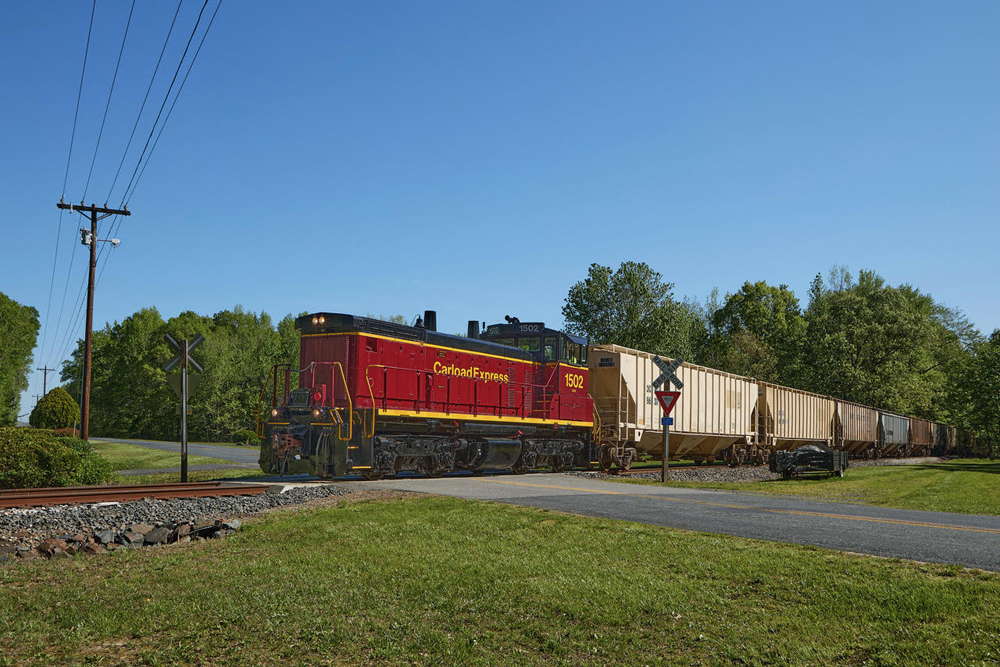




Well Stated — The formula used for executive bonus calculations makes no negative adjustment for customers turned away, because “lower capacity/higher fare” is the business model. I used to think the lack of coaches on long distance trains was due to limited resources at Beech Grove for repairing sidelined equipment. But recently I got a different explanation from a conductor on the Coast Starlight. Like many long distance trains, this train has only two coaches. The conductor tells me that a third coach will not be assigned because Amtrak would need to pay the salary of a second coach attendant. A shame, because this train operated pre-Covid with a business class coach plus 2-3 regular coaches. Business class service was dropped in late 2022 due to the expense of providing wifi service, leaving only two regular coaches. Apparently the expenses of a second coach attendant and providing wifi impact the “adjusted income” used to calculate those executive bonusses.
I’m sure a fraction of the bonuses would fix up a couple Sightseer Lounges to restore that amenity to the Texas Eagle. A long distance train is nearly unrideable without the ability to get up and move about without having only your seat as your space. I’d rather take the 3x weekly Sunset Limited than the daily Texas Eagle, but the Sunset’s problems are another story.
It’s clearly evident that Amtrak’s top management has no interest in restoring and improving long-distance passenger trains! Most of Amtrak’s long-distance routes are treated as second-class services and are only being operated because Amtrak is required to run these trains under law.
A simple example is the poor CARDINAL operating 3-days per week, with two 58 seat coaches (116 seats total), a cafe car with snacks, one sleeping car and a few rooms in a baggage/dorm car. The CARDINAL sleeper rooms are sold out many weeks in advance, and coach seats are often sold out many days ahead of customer’s planned departure date.
Yet, Amtrak management allows spare sleeping cars, coaches and dining cars to sit idle at various locations, with no intent to return the cars to service to expand ridership. The CARDINAL route offers spectacular scenery (New River Gorge, Appalachian and Blue Ridge Moutains, Ohio River) that would make the perfect line to add a Viewliner Diner, an additional Viewliner Sleeper and another coach or two. But this would add a few more dollars of operating cost, so Amtrak management opposes any upgrades in service or any increase in space availability, thereby turning away new and previous customers and runs the CARDINAL with the bare minimum of service.
The current Amtrak management team has no desire to provide an EQUAL level of service to all parts of the United States. It’s corridor-mentally and its laser-focus on bolstering short-distance, regional trains leaves any long-distance improvements only a pipe-dream.
Perhaps a class-action, discrimination lawsuit on behalf of coach passengers who are not allowed to eat meals in a dining car, or be offered equal meal service, would be a start to wake-up the sleeping giant. Maybe a proposal to change the Amtrak charter to create a dedicated company division to be focused solely on long-distance trains, would be another idea. Lots of options. But nothing will change if the public and lawmakers sit back and allow the existing situation to continue.
Investing capitol to restore Sightseer Lounges and traditional dining service on the Texas Eagle, which would inevitably increase ridership and revenue substantially, would also hurt bonuses for Gardner, Coscia, and Harris. Why else would some trains remain downgraded after all these years. Amtrak’s management knows well that the inferior service offerings on the Texas Eagle discourage potential riders!!
And if the preceeding isn’t enough, perhaps this alleged corruption article helps explain something.
https://www.judicialwatch.org/air-marshal-deputy-director/?utm_source=deployer&utm_medium=email&utm_content=&utm_campaign=corruption+chronicles&utm_term=members
Voodoo accounting. their system would never pass GAAP standards.
Great post for starter of needed conversation, Maybe Trains will survive and thrive if there is more of this. Don Phillips has publicly raised the questionable accounting and business practices of the farcical Amtrak operations for years to no avail.
Maybe, then, no bonuses should be paid until the Long distance trains are made whole. I know the rest of the country would like the same opportunities to travel as inexpensively as those riders in the Northeast Corridor do. But as long as Amtrak is allowed to continue its “fuzzy accounting” methods, that day will never come. So why should Upper management get any bonuses at all for doing no more than picking the low hanging fruit, the job they should be doing by nature of being employed???
Amtrak has plans to restore washing facilities to service at several locations, but to do so requires capital investment funds that negatively impact bonuses. Bob Johnston. This paragraph under the picture above explains a lot. This is probably the same reason they don’t repair the cars or motive power either. All the money makers don’t want the expense coming from budgets so as to get screwed on their bonus.
Didn’t that quote say it all???
Excessively paying the chiefs is not going to bode well for those who actually do the work in the field. Paying $9M MORE for what these folks should be doing all along seems to be contrary to good fiscal management. Paying the suits more while obscuring the actual improvements makes me doubt this.
This article just makes a point I’ve been saying all along. Government “accounting” would land a private sector CFO in prison. Including Amtrak as government “accounting”.
Consider (as I never tire of telling people) that state and local governments have “balanced” budgets. That is, “balanced” with federal grants, the federal funny money counts as “revenue”. Although the federal grants are from fiat money, not revenue.
So here we find in today’s article that federal fiat money transferred from one pocket (federal) to another pocket (the states) to Amtrak counts as Amtrak “revenue” in calculating Amtrak executive bonuses.
My point is this: To appropriate a much-repeated (and entirely true) phrase, “People don’t always get the government they want, but they do get the government they deserve.”
Following today’s politics, the upcoming presidential election, it’s evident that voters of either party don’t know what’s going on in Washington and don’t want to know. The Democrat Party is 100% corrupt. The Republican Party weighs in at 99%. And that’s exactly what the voters want.
Difference is GOP are led by a multi time Convicted Felon, so your 100-99 analogy you might want to make adjustments to like 75% GOP to 25% Democrats. I refer to it as the GOP because there are very few true Republicans left in Congress anymore.
Well, Mark, I could argue with you until time ends, but instead I will partially agree with you. The last ten words of your post, you and I see it the same way.
Having said that Mark, do we also agree that Amtrak accounting is a world-class scandal?
Don’t worry Mark. Once Biden is defeated he will be in turn treated to the same tricks that the Democrats treated Trump to and then everything will be equal. Or as some like to say, “What goes around, comes around…” This is what you get when political parties in Washington “play politics” instead of doing the people’s business… WHICH THEY HAVE A CONSTITUTIONAL OBLIGATION TO DO OVER ANYTHING ELSE!